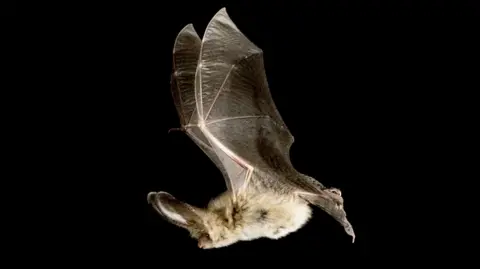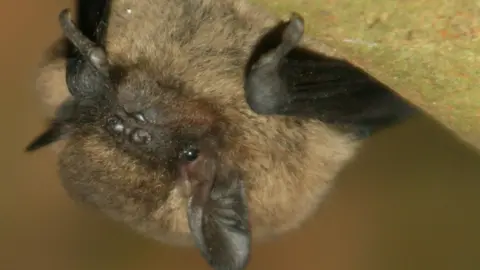D-Day training pillbox converted into home for bats
 National Trust
National TrustA German-style pillbox used for Army training in the run-up to D-Day has become home to some of Britain’s most protected bat species.
Dunwich Heath and Beach on the Suffolk coast provided a vital training area for British soldiers during World War Two by mimicking German defences.
One of its few surviving pillboxes was modified to provide a suitable bat habitat by the National Trust and brown long-eared and Natterer’s bats have roosted there.
The trust's Richard Gilbert said converting the pillbox "was a fantastic way to honour Dunwich’s lasting heritage".
 National Trust
National TrustThe heath hosts nine species in all, including three species of pipistrelle bat, the noctule, serotine, Daubenton’s bat and the barbastelle, which is considered one of the UK’s most vulnerable species, the charity said.
Neither the brown long-eared nor Natterer's bat are currently endangered, according to the Bat Conservation Trust.
 Imperial War Museum
Imperial War MuseumThe area around Westleton Walks and Dunwich Heath was the base for Exercise Kruschen in 1943, one of the first large-scale military exercises designed to help with the planning of D-Day.
It was an attempt by the Allied high command to avoid repeating the disastrous 1942 raid on Dieppe in Normandy, which caused heavy casualties.
Defences were built to closely replicate their real German counterparts, with trenches, minefields, barbed wire and anti-tank measures.
 Justine Minns/National Trust
Justine Minns/National TrustBats were already roosting in the pillbox when the National Trust was granted permission to turn it into a hibernaculum in 2012 – an underground chamber that provides a stable temperature and moist humidity for bats to roost in, creating shelter and reducing the risk of interference from other mammals.
Mr Gilbert, Dunwich’s property operations manager, was then an area manager for the trust.
He and a team of volunteers sealed up the pillbox's openings, created new access slits and added specially-designed bat bricks.
 National Trust
National TrustVarious surveys since have revealed a number of bat species taking up home in the bunker-like structure. Several brown long-eared bats were in residence in February.
Mr Gilbert said: "Lots of visitors are surprised by the significant contribution the heath made to the D-Day landings.
"By repurposing [the pillbox] into a bat hibernaculum we’ve been able to not only extend its legacy but also encourage nature to thrive and support the wider biodiversity of the heath and woodlands."
Follow Suffolk news on Facebook, Instagram and X. Got a story? Email [email protected] or WhatsApp us on 0800 169 1830
